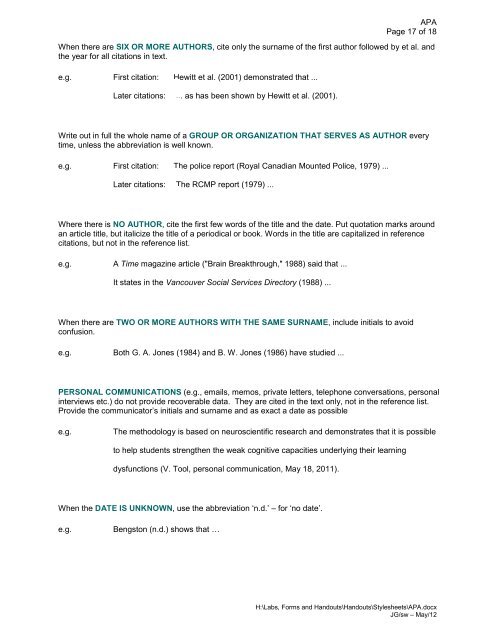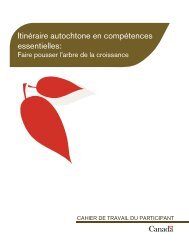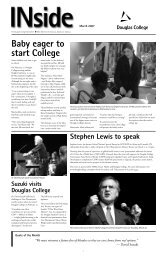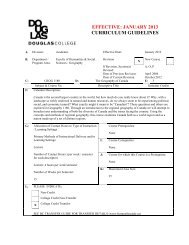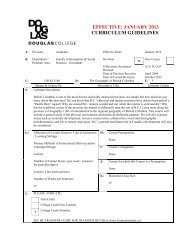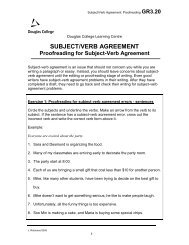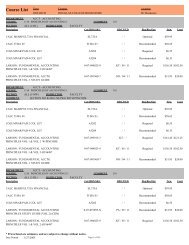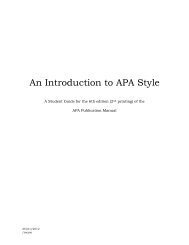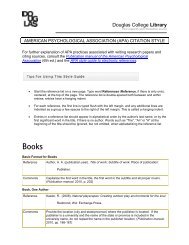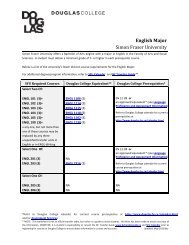APA style guide - Douglas College
APA style guide - Douglas College
APA style guide - Douglas College
You also want an ePaper? Increase the reach of your titles
YUMPU automatically turns print PDFs into web optimized ePapers that Google loves.
<strong>APA</strong><br />
Page 17 of 18<br />
When there are SIX OR MORE AUTHORS, cite only the surname of the first author followed by et al. and<br />
the year for all citations in text.<br />
e.g. First citation: Hewitt et al. (2001) demonstrated that ...<br />
Later citations: ... as has been shown by Hewitt et al. (2001).<br />
Write out in full the whole name of a GROUP OR ORGANIZATION THAT SERVES AS AUTHOR every<br />
time, unless the abbreviation is well known.<br />
e.g. First citation: The police report (Royal Canadian Mounted Police, 1979) ...<br />
Later citations: The RCMP report (1979) ...<br />
Where there is NO AUTHOR, cite the first few words of the title and the date. Put quotation marks around<br />
an article title, but italicize the title of a periodical or book. Words in the title are capitalized in reference<br />
citations, but not in the reference list.<br />
e.g. A Time magazine article ("Brain Breakthrough," 1988) said that ...<br />
It states in the Vancouver Social Services Directory (1988) ...<br />
When there are TWO OR MORE AUTHORS WITH THE SAME SURNAME, include initials to avoid<br />
confusion.<br />
e.g. Both G. A. Jones (1984) and B. W. Jones (1986) have studied ...<br />
PERSONAL COMMUNICATIONS (e.g., emails, memos, private letters, telephone conversations, personal<br />
interviews etc.) do not provide recoverable data. They are cited in the text only, not in the reference list.<br />
Provide the communicator’s initials and surname and as exact a date as possible<br />
e.g. The methodology is based on neuroscientific research and demonstrates that it is possible<br />
to help students strengthen the weak cognitive capacities underlying their learning<br />
dysfunctions (V. Tool, personal communication, May 18, 2011).<br />
When the DATE IS UNKNOWN, use the abbreviation ‘n.d.’ – for ‘no date’.<br />
e.g. Bengston (n.d.) shows that …<br />
H:\Labs, Forms and Handouts\Handouts\Stylesheets\<strong>APA</strong>.docx<br />
JG/sw – May/12


